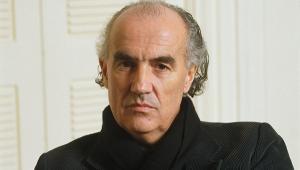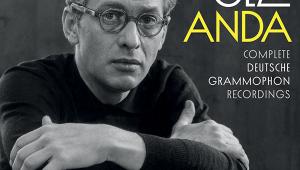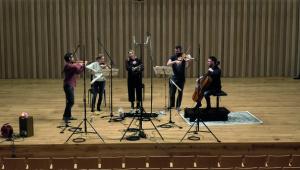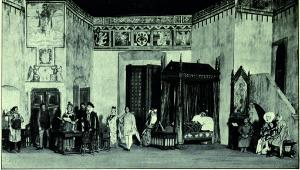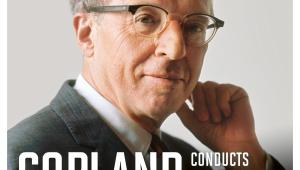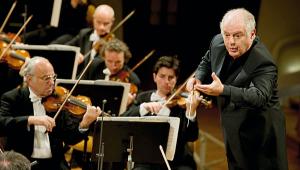Ravel String Quartet

Ravel was a sharp-suited Parisian-about-town in his late 20s when he wrote the String Quartet during 1902-3. He had a decade of composition behind him, mostly piano pieces, but little to show for it. He didn't even have a graduation certificate from his years of study at the Paris Conservatoire, still less any recognition conferred by the coveted Prix de Rome, despite several unsuccessful attempts to win over the conservative judges while pointedly breaking their rules and fastidiously refining his own voice.
Model Behaviour
Nevertheless he had begun to take on pupils of his own. One of them, the pianist Vlado Perlemuter, later remembered his teacher's advice to imitate, echoing the practice of great painters down the centuries. In attempting to copy a model, Ravel maintained, it is the points at which you unconsciously diverge that you reveal whether or not you have something of your own to say.
The obvious model for Ravel's Quartet is the example composed a decade earlier by Debussy: sonata-form first movement, spiky dialogue between plucked and bowed strings in the Scherzo followed by a shimmering elegy and a metrically idiosyncratic finale. This is all unified by a cyclical use of head motifs owing something in turn to the school of Franck from which the two younger composers had otherwise taken pains to distance themselves.

Ever since Mozart, quartet writing had become the very pinnacle of 'abstract' composition, and both Debussy and Ravel evidently wished their own efforts to be received within that lineage, not only through the adoption of relatively traditional forms but even in their titling. 'Quartet in F': Ravel's assertion of an overarching tonality is as much a red herring as Debussy's assignation of an opus number (10 – without having labelled the previous nine).
Debussy listened to the quartet before its premiere in 1904 and apparently approved. The superficial resemblances between the two works stirred up factional supporters of both composers, and led to an estrangement. 'It's probably best...', Ravel reflected, 'for us to be on frigid terms for illogical reasons'.
Like oil colours on a canvas over time, the similarities have become muted to reveal contrasts beneath. Ravel's scoring for the strings is more transparent despite its orchestral range of colour. The Basque character inherited from his mother, always worn as a badge of identity in his music, emerges in the Scherzo's guitar-like strumming.
Ravel was not a man to leave anything to chance, and his dedication of the Quartet 'to my dear teacher, Gabriel Fauré' leads us to reflect on the harmony and serenity of the slow movement in particular as the fruit of his teaching. Fauré, too, liked the Quartet, aside from the 5/8 finale, which has foxed more than a few performers and listeners over the last century.
Smoke And Mirrors
Ravel himself later confessed to imperfections in the work's form which may be taken with the same pinch of salt as Brahms's self-deprecating comments on his work. All three men, after all, placed Mozart closest to heaven, and at a time when he was often patronised as a composer in pastels rather than ink or oil.

Ravel's piece attains a more Mozartian harmony of expression than the quartets of either Debussy or Fauré. Especially in the first and third movements, something reserved, confident and unknowable draws us in like Godard's camera trained on Jean Seberg in the long tracking shots of À bout de souffle, both inviting and resisting our gaze.
Rather as with Mozart's works, there are very few outright bad recordings of Ravel's Quartet, but equally few outstanding ones. In a fine historical irony, many modern quartets have adopted supposedly 'period' performance principles and stripped-back vibrato to produce a much more modernist, Bartókian soundworld than Ravel was writing for, as the earliest recordings demonstrate. Playing on gut strings in a download-only version on Resonus, the Eroica Quartet return to the warmth and ambience of the composer-approved version by the International String Quartet.
Nothing Too Much
As leader of the ISQ, Andre Mangeot painted a vivid picture of Ravel auditioning the 78s, shrouded in cigarette smoke in a listening booth at the Aeolian Hall in London. 'He knows exactly what he wants – how, in his mind, that quartet, every bar, ought to sound.' The players worked hard – and successfully – to achieve the right, limpid tone.
In this regard, most non-native ensembles come off second best. Even the precision of the LaSalle and the polish of the Emerson quartets (both DG) fail to compensate for Frenchness of timbre and phrasing. Czech versions by the Vlach and Talich ensembles bring Mozartian warmth but also rhythmic stiffness. Characteristically bold and robust, the Lindsays miss the tenderness of the slow movement. In both their mono and stereo versions, the Quartetto Italiano sway and surge like the swell underneath Un barque sur l'océan, but I find their tempo shifts too obvious – here is passion, there is the climax – like a teacher drawing out an analytical map.

Compare them if you can to the Quatuor Parrenin (especially the EMI-made stereo version, for now deleted) bringing out the sunshine in the Scherzo, placing every accent, easing between and through shifts of metre: nothing is too much.
Dynamic Extremes
Even in the 5/8 abandon of the finale, almost all the best versions [see Essential Recordings, below] sound at ease with the world and the score. Several modern quartets have made superbly characterised versions (the Belcea, Signum and Arcanto principal among them) but the ppp-fff range of the score, and high-fidelity engineering, have elicited both dynamic extremes and a style of playing for the microphone that risk contrivance.
Instead, in the playing of the Parrenin, the Ysaÿe and Ebène quartets from different eras, I find an improvisatory flow and a wistfulness that speaks directly to the liminal quality of the Quartet. They bring the kind of gently luminous sound and lightness of spirit that are also prerequisites for Mozart quartets. With them, we hear the first movement working in swiftly changing pairs just as the patterning of accents of Scherzo and finale shifts from bar to bar.
Underneath all this restlessness we perceive unity at an instinctive level as the head motifs dart to the surface and finally break cover in the finale towards a kind of enveloping transcendence which Ravel later evoked in the climactic dance of Daphnis and Chloe.
Essential Recordings
International String Quartet
Music & Arts MACD0703 (2 discs)
Best of the composer-supervised versions on a faithful transfer though unhelpfully presented as a single track!
Carmirelli Quartet
Decca Eloquence 4768458
Crisp and involving Decca 1960s miking paired with rhythms caught on the wing and classic Italian cantabile phrasing.
Melos Quartet
DG 4790529
Most persuasive of the tense, Bartókian-style approaches from non-native quartets, and in matching analytical DG sound.
Quatuor Ysaÿe
Decca 4304342
An early-digital version to reckon with: slightly cooler in both sound and style than some but full of atmosphere.
Quatuor Ebène
Erato/Warner 5190452
Every note speaks. French sound, supple tempos and refined fidelity, responsive to both Mozartian and modern aspects.
Quatuor Van Kuijk
Alpha ALPHA295
Like an imaginary Cézanne portrait of the late-20s Ravel: precise and confident yet hinting at shadows and vulnerabilities.


